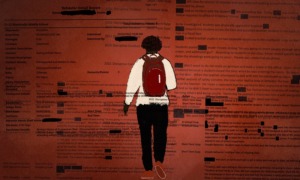By Amy Bracken
Less than a year after a bitter struggle with GOP lawmakers who threatened its very existence, Florida’s partly youth-driven Pilot Program on Tobacco appears to stand as the most effective anti teen-smoking program in the country – ever.
Started in 1998 with $70 million in tobacco settlement funds, first-year evaluations of the Pilot Program’s effects showed a teen smoking reduction of barely more than two percentage points (the study’s margin of error). Nevertheless, the U.S. Centers on Disease Control and Prevention said that was the largest one-year reported decline in the nation since 1980.
Unconvinced of the program’s success, or swayed by the influence of tobacco companies (which contributed $678,900 to the state GOP in four years), the state House of Representatives voted to kill the program last year. But after protests from the state Senate (controlled by more moderate Republicans), Republican Gov. Jeb Bush (who wanted to cut the program by $9 million) and the public – including teens rallying across the state – lawmakers settled for slicing the Pilot Program’s funding in half.
For the program’s next fiscal year, Pilot Program advocates seem virtually worry-free. “There’s really no further excuse to cut the program any further,” said Peter Fisher, manager of state issues at the D.C.-based Campaign for Tobacco-Free Kids, which conducted a survey last year that showed that about 80 percent of Floridians supported continued funding the program at its current level.
Why the sudden confidence? An evaluation of the program released by the Florida Department of Health in March revealed these decreases in Florida teen smoking from 1998 to 2000: From 18.5 percent down to 8.6 percent among middle school students, and from 27.4 percent down to 20.9 percent among high school students. This large a reduction in teen smoking in such a short period of time may be unprecedented.
Massachusetts, Oregon and California are all known for their effective comprehensive programs. Like Florida, they include education, enforcement and advertising (both health-related and industry-related). Florida, however, is the only state to have integral youth involvement and the only state to see a major reduction in smoking in such a short time frame.
What makes Florida special? The most visible difference is the Pilot Program’s Truth Campaign, a “counteradvertising” campaign run by SWAT (Students Working Against Tobacco).
Debbie Bodenstine, director of the Pilot Program, says that the number of SWAT members is growing so rapidly that it’s difficult to count, but the current total is between 6,000 and 10,000. Each of Florida’s 67 counties, says Bodenstine, has a youth-led SWAT board which partners with community and youth organizations.
The Truth campaign is part of a major shift from the condescending, finger-wagging, “It’s bad for you” and “Just say no” campaigns of the 1980s. The SWAT kids bring in components that win over their peers: humor and rebelliousness. The ads do not tell kids what to do or what’s best for them. Instead, they charge that Big Tobacco is out to hook kids, suggesting that by smoking, kids are letting themselves get suckered. Smoking, in other words, means doing what you’re told.
One Truth ad, aired during the Superbowl, featured a tobacco industry hearing in which canned laughter accompanied a tobacco CEO’s claim that cigarettes don’t kill. Another television ad is a spoof on the Academy Awards, in which tobacco wins the “Demon Award” for killing more people than murder, suicide and drug abuse combined.
Florida’s settlement with tobacco initially included a ban on ads that targeted the industry, but the clause was removed. According to a report released by the National Cancer Policy Board, evaluators of California tobacco control concluded that the state’s advertising program became less effective when “counteradvertising” began to focus on health risks rather than on tobacco industry practices.
Tamara Gibson, a high school sophomore who chairs the Flagler County SWAT board, was recruited by someone she met through a Key Club to attend educational meetings about tobacco. “I wasn’t really concerned about [smoking],” she said, “until I really got involved in the program [and saw that] tobacco agencies’ manipulations were just wrong.” Gibson is also a state executive SWAT board member. In January she organized a SWAT2K Leaders of the Millennium meeting in Gainesville, which drew more than 300 young people.
A study released last month by the Campaign for Tobacco-Free Kids says that tobacco advertising impacts kids more than adults. The report says that 73 percent of teens (ages 12-17) reported seeing tobacco advertising in the previous two weeks, compared with 33 percent of adults. It also says a large portion of tobacco magazine ads are concentrated in People Magazine and Sports Illustrated, both of which have far more teen than adult readers.
There are five components of the Florida Pilot Program: marketing, education, partnership, evaluation and enforcement. All are supported by settlement funds and all but enforcement are run by the Florida Department of Health.
Contact: Florida Office of Tobacco Control (850) 245-4111.
























